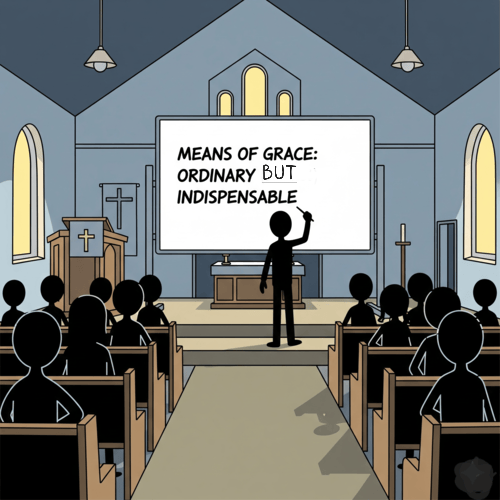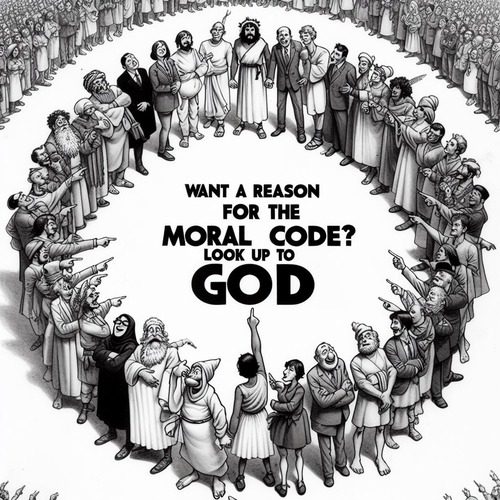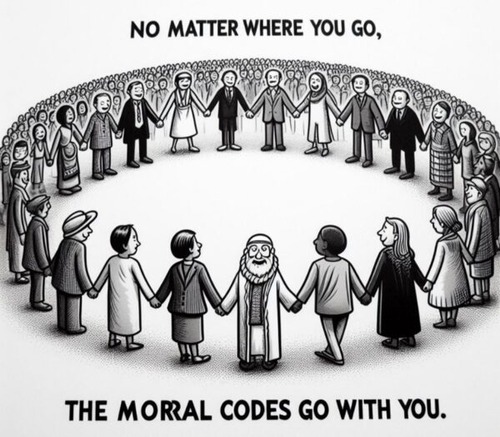The Sun’s Age: Is It Really A Showstopper for A Young Earth?
When discussing creation and the age of the earth, sceptics often point to the sun as definitive evidence against the young earth position. “The sun is 4.6 billion years old,” they declare, “so how could Earth be only thousands of years old?” At first glance, it may seem like an insurmountable obstacle for us who believe in biblical timelines. But is it really the “showstopper” many claim it to be?
This post examines the evidence, assumptions, and alternative explanations that demonstrate why the sun’s apparent age doesn’t necessarily contradict a young earth perspective.
HOW SCIENTISTS DATE THE SUN
Before challenging conventional wisdom, it’s important to understand how scientists arrive at the 4.6-billion-year figure for our sun’s age. The dating process relies on several methods:
- Radiometric dating of meteorites: Scientists examine isotope ratios in meteorites believed to have formed at the same time as our solar system.
- Solar models based on nuclear fusion: Calculations about the sun’s fuel consumption and core processes suggest billions of years of operation.
- Helioseismology: Measuring sound waves that pass through the sun to determine its internal structure and properties.
These methods form the foundation of the widely accepted timeline for our solar system’s formation. But do they truly rule out a young earth?
THE ASSUMPTIONS BEHIND THE DATING METHODS
All scientific dating methods rely on assumptions that cannot be empirically verified. Three critical assumptions deserve examination:
The Uniformitarian Principle: Conventional dating assumes physical processes and rates have remained constant throughout time. This “uniformitarianism” isn’t a proven fact but a philosophical framework. If rates of nuclear fusion or decay have varied significantly in the past—particularly during creation—age calculations would be dramatically affected.
Dr Russell Humphreys, a physicist who has written extensively on creation science, notes: “Uniformitarian assumptions are necessary for old-age estimates, but there are good scientific and biblical reasons to question those assumptions.”
Initial Conditions: Dating methods rely on assumptions about the sun’s initial conditions. Were certain isotopes more abundant at creation? Was the sun created with an appearance of age, just as Adam and Eve were created as adults? These initial conditions cannot be observed or tested experimentally.
Limited Observational Window: We’ve only been studying the sun scientifically for a few centuries—an incredibly small fraction of its supposed age. Drawing conclusions about billions of years from such limited observation requires significant extrapolation.
CREATION WITH APPEARANCE OF AGE
The Bible describes God creating a mature, functioning universe. Trees bore fruit immediately (Genesis 1:12), Adam and Eve were created as adults, and stars were visible from Earth on day four (requiring their light to be already visible despite the vast distances). This suggests God created the cosmos with an appearance of age.
This isn’t divine deception but necessary functionality. The sun needed to be immediately capable of sustaining life on Earth. If God created according to the biblical account, we would expect the sun to show signs of maturity from its very beginning.
ALTERNATIVE SCIENTIFIC EXPLANATIONS
Several scientific models compatible with a young earth have been proposed by creation scientists:
Accelerated Nuclear Processes: Dr D Russell Humphreys and the Radioisotopes and the Age of The Earth (RATE) project have proposed periods of accelerated nuclear decay during creation week and possibly during the Flood. These accelerated processes would give the appearance of great age while occurring within a biblical timeframe.
Variable Constants: Some research suggests that what we consider “constants” in physics may not be truly constant across time. Small variations in fundamental forces could dramatically affect age calculations. Dr. John Hartnett, an Australian physicist who has published on cosmological models compatible with a young earth, notes even small changes in constants could explain the appearance of age within a creation framework.
Solar Shrinkage Data: Some observations suggest the sun may be shrinking at a measurable rate. While controversial even among creation scientists, this data potentially challenges assumptions about solar stability over billions of years.
THE FAINT YOUNG SUN PARADOX
Interestingly, conventional solar models have their own problems. The “faint young sun paradox” notes that according to standard solar evolution models, the early sun would have been too faint to keep Earth warm enough for liquid water during the time when life supposedly evolved. Yet geological evidence suggests Earth has had liquid water throughout its history.
This paradox remains unresolved in conventional models and suggests our understanding of solar physics may be incomplete.
ADDRESSING THE STRONGEST COUNTER-ARGUMENTS
The scientific consensus strongly favours an ancient sun, and this position shouldn’t be dismissed lightly. However, consensus itself isn’t evidence—history shows scientific consensus has been overturned many times.
More substantively, the correlation between multiple dating methods provides strong support for the conventional timeline. Creation scientists respond by noting these methods often share underlying assumptions, meaning they aren’t truly independent confirmations.
It’s also worth distinguishing between observational and historical science. We can observe the sun’s current behaviour with great precision, but conclusions about its distant past necessarily involve more interpretation and assumption.
FAITH AND SCIENTIFIC INQUIRY IN HARMONY
Young earth creation scientists don’t reject scientific methods but rather question certain philosophical assumptions underlying age determinations. Many are credentialed scientists who see their work as refining our understanding of how God created.
Dr Jason Lisle, an astrophysicist who has published on solar physics, suggests: “The evidence for the sun’s age is based on models that presuppose naturalism. When we allow for divine creation, the data can be understood in a different framework.”
CONCLUSION: THE SUN’S AGE
While conventional science presents the sun’s age as a “showstopper” for young earth creation, closer examination reveals this isn’t the case. The dating methods rely on unprovable assumptions, alternative scientific explanations exist, and the biblical account provides a coherent framework for understanding a sun that appears ancient but was created recently.
For those who accept biblical authority, the sun’s apparent age presents interesting scientific questions to explore—not an obstacle to faith. The goal should be honest evaluation of evidence rather than uncritical acceptance of conventional wisdom.
FURTHER RESOURCES
- Thousands, Not Billions by Dr Don DeYoung
- Starlight and Time by Dr Russell Humphreys
- Taking Back Astronomy by Dr Jason Lisle
THE SUN’S AGE: RELATED FAQs
How do creation scientists explain the sun’s nuclear fusion processes within a young earth timeframe? Creation scientists propose God created the sun with fusion already in progress, establishing the precise balance of hydrogen and helium we observe today. The nuclear processes we measure now were designed to sustain life on Earth for its intended duration, not as evidence of billions of years of prior operation. This is consistent with God creating a fully functional universe rather than one that needed to develop over time.
- What about distant starlight? Wouldn’t stars billions of light-years away contradict a young universe? God created stars with their light already reaching Earth—similar to Adam being created as an adult rather than a baby. Some creation scientists suggest time may have flowed differently during creation week, allowing billions of years to pass in outer space while only days passed on Earth. Either way, the Bible tells us God made the stars “to give light upon the earth” immediately, not billions of years later.
- If the sun is young, why does it contain heavy elements that supposedly form only in supernovae explosions? Think of it like finding a fully furnished house—you don’t need to wait for trees to grow to have wooden furniture. God created the sun with all necessary elements already in place. He didn’t need previous stars to explode to create these elements any more than He needed pre-existing soil to create plants.
How does a young sun account for the apparent ages of solar system features like the asteroid belt? The asteroid belt looks old only if you assume it formed gradually over millions of years. From a creation perspective, it was either created as-is during creation week or formed rapidly during catastrophic events like the Flood. It’s like seeing erosion in the Grand Canyon and assuming it took millions of years, when a massive flood could have caused similar features in days or weeks.
- Why would God create light from stars that never existed if they supposedly burned out millions of years ago? This is a misunderstanding of the creation view. God created real stars, not just their light. Every star we see was created during creation week and their light was made visible on Earth right away. There are no “fictional” stars in the creation model—just a different understanding of how their light reached us so quickly.
- How do creation scientists respond to helioseismology data that seems to confirm the standard solar model? Helioseismology tells us how the sun is structured today, but doesn’t prove how old it is. It’s like examining a brand-new car—you can accurately describe how the engine works without knowing when it was built. Creation scientists accept the actual measurements while questioning the age-related assumptions that are built into standard models.
Wouldn’t a young sun imply that scientific consensus across multiple disciplines is completely wrong? Scientific consensus is built on a foundation of naturalistic assumptions that exclude supernatural creation from the start. Creation scientists accept the same observational evidence but interpret it through a different starting point. It’s like two people watching the same movie but coming to different conclusions because one started watching from the beginning while the other walked in halfway through.
THE SUN’S AGE: OUR RELATED POSTS
Editor's Pick

Paul’s Mandate for Men: Headship Or Servant Leadership? Or Both?
Modern Christianity has fallen into a trap. We've created an either/or battle between "headship" and "servant leadership," as if these [...]

Should We Stop Using Male Pronouns for God? Why Do We Say No?
A friend of ours arrived eagerly at his first theology class in seminary. But he quickly discovered something troubling: the [...]

Did Old Testament Law Force Women to Marry their Rapists?
**Editor’s Note: This post is part of our series, ‘Satan’s Lies: Common Deceptions in the Church Today’… Viral misinformation abounds [...]

From Danvers To Nashville: Two Statements, One Biblical Vision
30 years separate the Danvers Statement on Biblical Manhood and Womanhood (1987) and the Nashville Statement on Human Sexuality (2017). [...]

The Nashville Statement: Why Affirm It Despite Media Backlash?
WHY DO REFORMED CHRISTIANS STAND BY THIS STATEMENT ON MARRIAGE AND GENDER? When the Nashville Statement was released in 2017, [...]

Who Is Belial? Solving The 2 Corinthians 6:15 Mystery
Belial: This name from the pages of Scripture chills the soul. Who is this mysterious figure Paul invokes in 2 [...]

Celibacy Or Castration: What Jesus Really Means in Matthew 19:12
One of Scripture's most shocking misinterpretations led theologian Origen to castrate himself in the third century. His tragic mistake? Taking [...]

Philippians 4:13: Did Paul Really Mean We Can Do ALL Things?
"I can do all things through Christ who strengthens me." It's on gym walls, graduation cards, and motivational posters everywhere. [...]

The Ordinary Means of Grace: Why Are They Indispensable?
ORDINARY MEANS FOR EXTRAORDINARY TRANSFORMATION What if God's most powerful work in believers' lives happens through the most ordinary activities? [...]

Is the Bible God’s Word? Or Does It Only Contain God’s Word?
The authority of Scripture stands at the crossroads of modern Christianity. While some argue the Bible merely contains God’s Word [...]
SUPPORT US:
Feel the Holy Spirit's gentle nudge to partner with us?
Donate Online:
Account Name: TRUTHS TO DIE FOR FOUNDATION
Account Number: 10243565459
Bank IFSC: IDFB0043391
Bank Name: IDFC FIRST BANK






